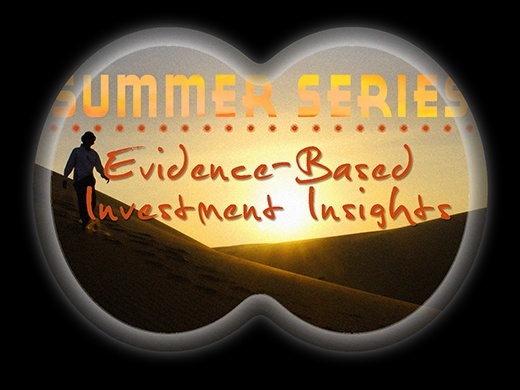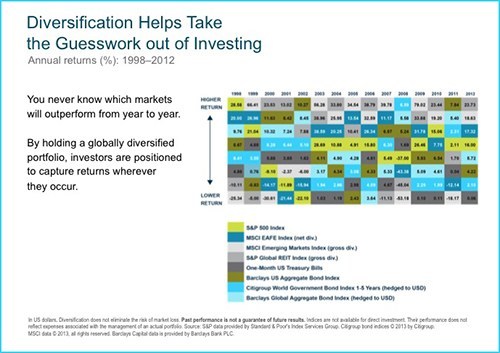
Get Along, Little Market

As we introduced in our last post, we’ve obtained the rights to share what we feel is an excellent series of articles: Evidence-Based Investment Insights. Here is the final post in this seven-part series.
In our last piece, “Managing the Market’s Risky Business,” we described how diversification plays a key role in minimizing unnecessary risks and helping you better manage those that remain. Today, we’ll cover one more benefit to be gained from a well-diversified stable of investments: creating a smoother ride toward your goals.
Diversifying for a Smoother Ride
Like a bucking bronco, near-term market returns are characterized more by periods of wild volatility than by a steady-as-she-goes trot. Diversification helps you tame the beast, because, as any rider knows, it doesn’t matter how high you can jump. If you fall out of the saddle, you’re going to get left in the dust.
When you crunch the numbers, diversification is shown to help minimize the leaps and dives you must endure along the way to your expected returns. Imagine several rough-and-tumble, upwardly mobile lines that represent several kinds of holdings. Individually, each represents a bumpy ride. Bundled together, the upward mobility by and large remains, but the jaggedness along the way can be dampened (albeit never completely eliminated).
If you’d like to see a data-driven illustration of how this works, check out this post by CBS MoneyWatch columnist Larry Swedroe, “How to diversify your investments.”
Covering the Market
A key reason diversification works is related to how different market components respond to price-changing events. When one type of investment may zig due to particular news, another may zag. Instead of trying to move in and out of favored components, the goal is to remain diversified across a wide variety of them. This increases the odds that, when some of your holdings are underperforming, others will outperform or at least hold their own.
The results of diversification aren’t perfectly predictable. But positioning yourself with a blanket of coverage for capturing market returns where and when they occur goes a long way toward replacing guesswork with a coherent, cost-effective strategy for managing desired outcomes.
The Crazy Quilt Chart is a classic illustration of this concept. After viewing a color-coded layout of which market factors have been the winners and losers in past years, it’s clear that the only discernible pattern is that there is none. If you can predict how each column of best and worst performers will stack up in years to come, your psychic powers are greater than ours.
Your Take-Home
Diversification offers you wide, more manageable exposure to the market’s long-term expected returns as well as a smoother expected ride along the way. Perhaps most important, it eliminates the need to try to forecast future market movements, which helps to reduce those nagging self-doubts that throw so many investors off-course.
We hope you’ve enjoyed this summer series of Evidence-Based Investment Insights, in which we introduced some of the challenges investors face in efficient markets and how to overcome many of them with a structured, well-diversified portfolio. With our next post, we return to our regularly scheduled programming, with fresh insights from Sheri and other SAGEbroadview contributing authors.
 Secure Document Sharing
Secure Document Sharing




